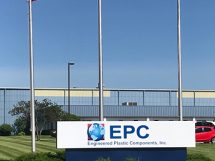Five finalists selected from 34 applicants
LOUISVILLE, Ky. (Sept. 29, 2016) — Louisville is one of five finalists for the U.S. Department of Housing and Urban Development’s FY 2016 Choice Neighborhoods Implementation Grants to transform public and/or other HUD-assisted housing, as well as the surrounding neighborhood. Finalists, selected from a pool of 34 applicants, will compete for individual grants of up to $30 million. Awards should be announced in December.
Along with Louisville, Boston, Denver, St. Louis and Camden, N.J. also are finalists.
HUD teams will visit the targeted housing and neighborhoods to meet with the applicants and partners to get a clear understanding of their individual Transformation Plans. HUD teams will ensure the applicants are committed and capable of implementing the neighborhood transformation as described in their application.
Site visits are part of HUD’s Choice Neighborhoods Implementation Grant application review process to determine which of the finalists are most competitive. Opening the site visits to the public or revealing the location of the targeted housing or neighborhood at this stage is not permitted under the statute governing HUD’s process to award competitive grants. Following the visits, HUD may request that applicants respond to technical clarification questions.
Finalists were ranked on how well their vision, capacity, and need addressed Choice Neighborhoods’ three core goals:
- Housing: Replace distressed public and assisted housing with high-quality mixed-income housing that is well-managed and responsive to the needs of the surrounding neighborhood.
- People: Improve educational outcomes and intergenerational mobility for youth with services and supports delivered to youth and their families.
- Neighborhood: Create the conditions necessary for public and private reinvestment in distressed neighborhoods to offer the kinds of amenities and assets, including safety, good schools, and commercial activity, that are important to families’ choices about their community.




















Add Comment